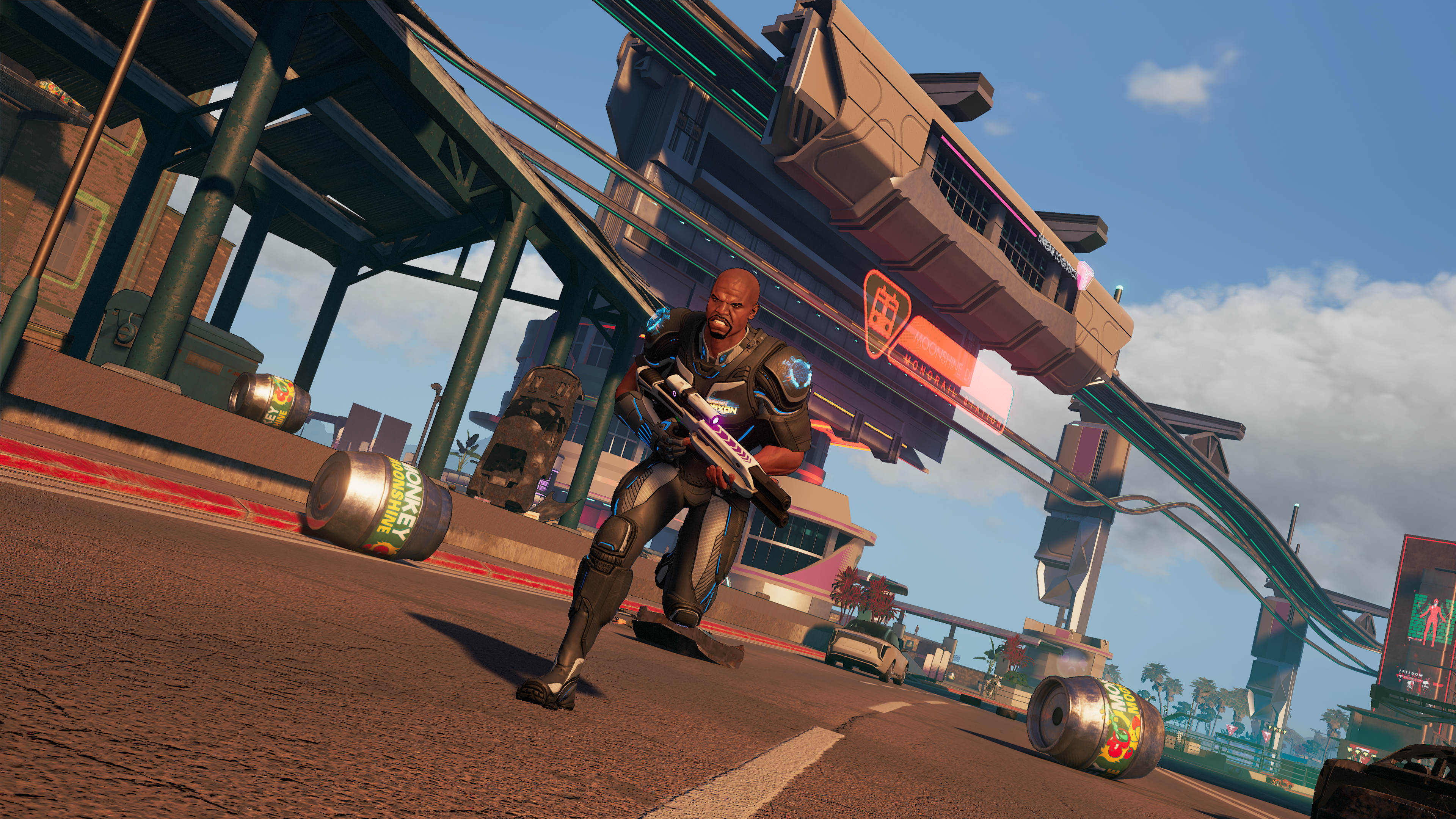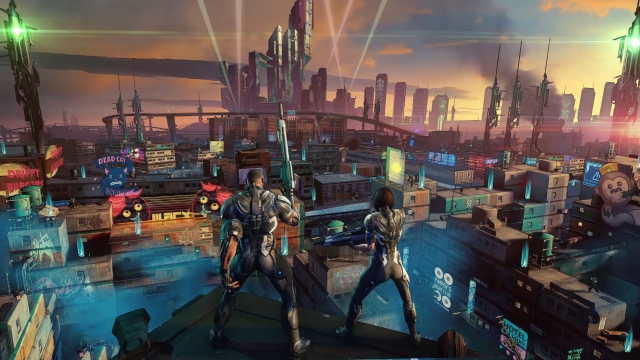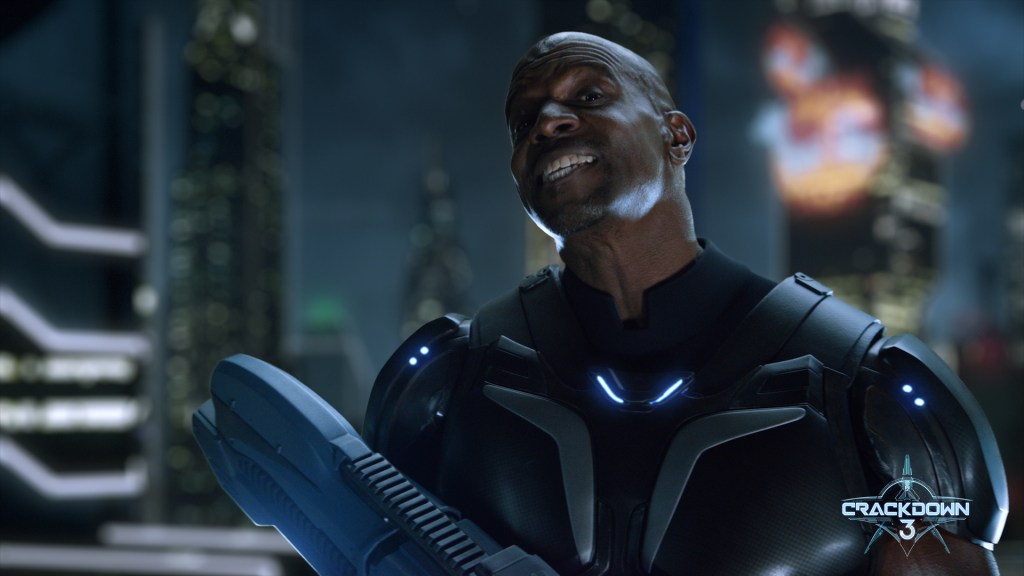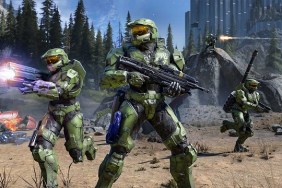Crackdown 3 is a game full of problems. The story is weak. The environments are bland. The controls feel distinctly like a game over a decade old. The mission objectives quickly become repetitive. But despite all of this, it feels refreshing. So many open-world games now fixate on realism, replicating the lives of real people through NPCs, constructing accurate representations of cathedrals and cities. Crackdown 3, though, is a game world designed to be played in.
There are so many aspects of Crackdown 3 that can be pointed out as older design sensibilities. It feels like a direct sequel to the 2007 original, with little innovation or change aside from nicer graphics, in many ways. But these game design aspects have been abandoned, despite being enjoyable. Just as 2D platformers have seen a resurgence in the indie scene, the older open-world design sensibilities of Crackdown 3 still deserve to be used and appreciated.
King of the hill

Buildings in Crackdown 3 are not places where people live. They’re not dwellings, they’re not organized logically, they don’t have people move in and out. Buildings in Crackdown 3 are platforms and vantage points designed to be climbed and explored. Roads, walkways, paths, and rooftops are huge with few details. They look bland, straight from an early Xbox 360 or late PlayStation 2 title.
But they’re not designed to be looked at; they’re designed to be unrealistic and massive to give the player’s growing run speed plenty of room to flex and not get stuck. Giant pipes protrude from comical chemical plants because they’re designed to be used as platforms for the player. Nothing here is to a realistic scale; it’s to an oversized, simplified scale to match the player’s ambitions.
In Crackdown 3, you’re not going to be using a chest-high wall as cover and having half your screen obscured by a wall texture. These items don’t need to be detailed because, like a crowd in a racing game, they’re meant to bounded past at speed, and the minor details are to be ignored. These environments aren’t here to be believable, nor is this a game ripe for digital tourism. This is a playground for the player. It’s designed as such and it functions as such.
This is less obvious in the early game, though. In Crackdown 3, your powers are constantly increasing, with your player becoming more competent and powerful as the game progresses. Grab orbs on buildings, and your run speed and jumps will be faster.
But in those early moments, you feel very grounded. Abilities are weak, and the game just feels lackluster to play. You move slowly and spend too much time looking at these bland environments at ground level. As far as first impressions go, it’s a poor one. Compare that early game character to your endgame character with multiple jumps and air dashes, blowing up dozens of enemies at a time in a complicated aerial ballet of bullets and it’s night and day. It’s a playground that requires you to build up a bit in order to see what it is truly made for.
City limits

The layout of the city is another factor that’s geared toward giving the player a better experience. As missions slowly expand in one direction, it gives you a clear path of progression on your map as you complete missions and explore the city. Unlike so many open-world games that overwhelm you with different icons, collectibles, and side quests, Crackdown 3‘s sandbox is achievable. This feels like a game that you can entirely complete without dedicating days of your life to it; a telltale mark of the most recent open-world games.
Propaganda Towers give you a great visual representation of your progress through the city without even looking at your map, while also giving you an idea of where to go next. These Propaganda Towers is the typical climbable tower you’ve seen in Ubisoft games before, except the challenge here isn’t just finding the right path — it’s actually jumping between platforms. It’s an actual challenge! Propaganda Towers can be seen throughout the game world, usually several from any given vantage point, and when climbed, the holographic propaganda on the top turns into something a bit more friendly.
This means when you just look around in the game world, you instantly see where you’ve been, what you’ve achieved, and where you want to go next. Being able to set yourself a goal without ever needing to look at maps or set waypoints is a wonderful feeling in open-world games, and leaping across rooftops to collect orbs on the way is just a bonus.
It’s impossible to talk about Crackdown 3 without mentioning the many problems it has. But playing it just might take you back to a time period where a game world facilitates gameplay and doesn’t simply act as a simulation of the real world. There’s a time and a place for both, certainly, but Crackdown 3 is built for the player to dominate, not live in. It’s just a shame that environmental destruction never made it into the campaign and truly reflected its domination mentality.







